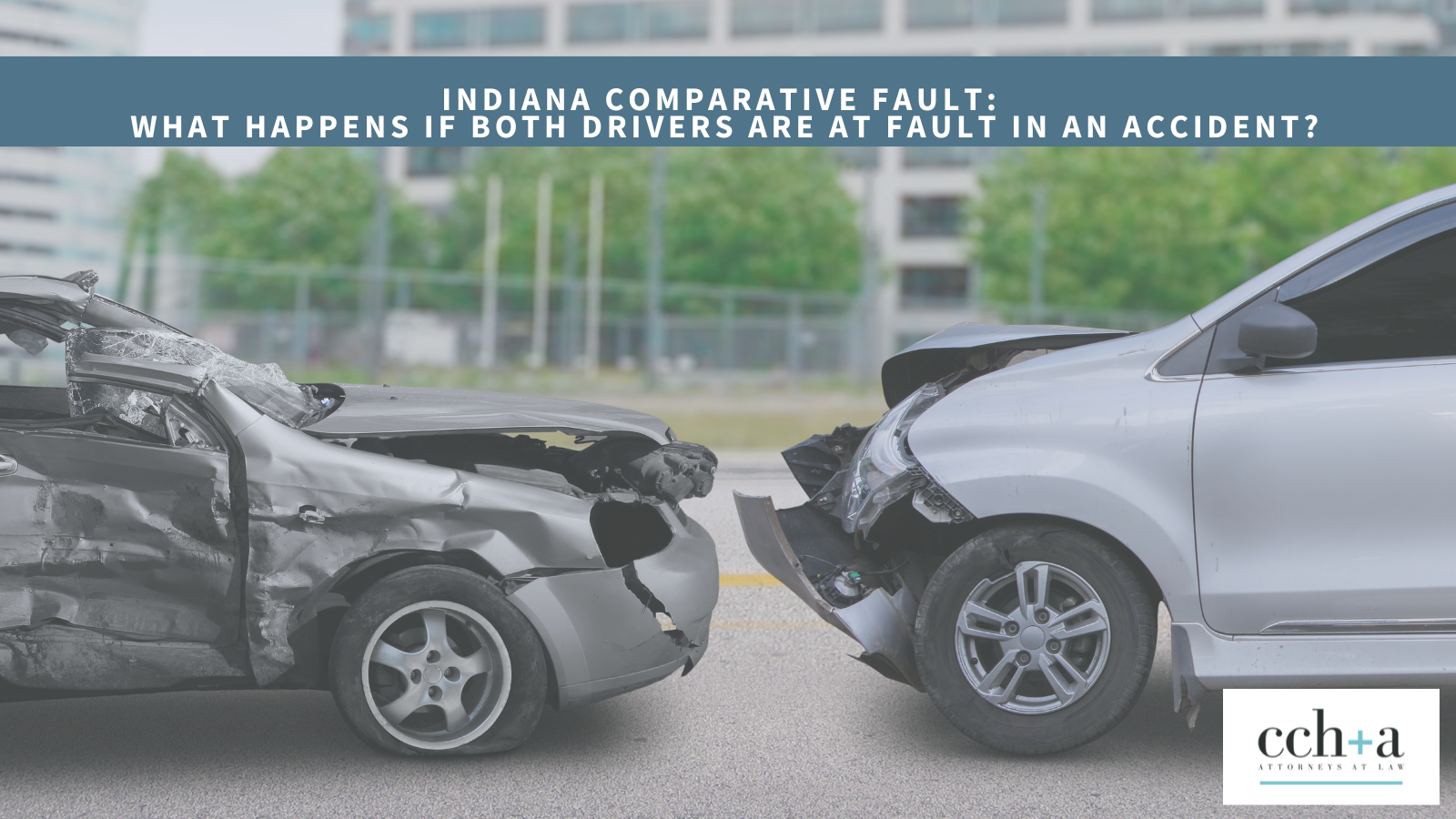What Happens If Both Drivers are At Fault in an Accident?

Author: Alexander P. Pinegar
POST DATE: 2.15.23

Sometimes car accidents are the result of a perfect storm of circumstances and both drivers are at fault. If you were injured in an Indiana car accident but may have contributed to the accident, you may still be eligible to receive damages. Learn more from Church Church Hittle and Antrim about what happens if both drivers are at fault in an accident and how the rule of comparative fault might apply to your claim.
What Is Comparative Fault?
Determining fault is a crucial component of any personal injury case. There are situations in which all of the parties involved in an accident are partially at fault. Depending on what type of fault rule applies, the at-fault parties might be able to recoup some of their damages or none at all. There are four main types of fault rules that are used to determine if a party is eligible to receive compensation and, if they are, how much they can receive.

Pure Contributory Fault
In a pure contributory fault system, a plaintiff who contributed to the accident in any way is barred from recovery, even if they were only 1% at fault. There are only a few states that follow this strict rule.
Pure Comparative Fault
The difference between contributory fault versus comparative fault is that contributory fault bars recovery if you had any fault and comparative fault does not. Under a pure comparative fault rule, damages are divided between negligent parties according to their share of fault, which is usually expressed as a percentage. An injured party may be compensated for damages even if they were partially at fault, but their final award will be reduced by their percentage of fault.
Modified Comparative Fault
There is a variation of pure comparative fault that is known as modified comparative fault. Like pure comparative fault, this rule allows parties that are partially at fault to collect compensation, with their final award being proportionally reduced by their percentage of fault. However, a party is only eligible to receive compensation if their amount of fault is below a certain threshold. In some modified comparative fault states, any party that is 51% or more at fault cannot recover. Some other states use 50% as the cutoff for being able to recover damages.
Modified Comparative Fault Examples
Indiana follows the rule of modified comparative fault, which is also used by 32 other states. Under Indiana law, you may recover damages as long as you are not more than 50 percent responsible for the accident. However, your percentage of fault will reduce the amount of compensation you receive.
To illustrate how this works, imagine you were in a car accident that was mostly the fault of the driver who hit you, but you were exceeding the speed limit and are found partially at fault as well. Under these circumstances, your damages award would be reduced by your percentage of fault. For example, if you were awarded $10,000 in damages, and the court determined you were 30% at fault for the accident, then your award would be reduced by 30%, and you would receive $7,000 instead. But, if you were found to be 60% at fault, you would not get any compensation at all because that’s higher than the 50% cutoff.
Claims Against the Government
In Indiana, pure contributory fault applies if you were in an accident involving a government agency or one of its subdivisions. This means that if you contributed to the accident in any way, you would not be able to recover compensation from the government, no matter how small your contribution was.
What to Do to Prove Liability
Because Indiana uses a modified comparative fault system, it is important to prove the other party was primarily at fault for your accident. You should also remember that the other party might try to prove you were also at fault so that they can pay you less compensation or no compensation at all. Obtaining relevant evidence can help you build a stronger case. Here are some things you can do immediately after an accident that can help you support your claim:
- Call the police. Make sure the police are called to the scene. The responding officer will create a report that will document key facts about the accident and help your attorney investigate the accident.
- Document the accident scene. Take photographs of the scene. You should take photos of all of the vehicles up close to show the damage and at a distance so that the position of the vehicles on the road and relative to each other is clear.
- Get contact information. Obtain contact information from witnesses at the scene of the accident. The police may also do this, but sometimes witnesses leave before an officer can arrive.
Perhaps most importantly, make sure that you do not admit to or imply that you are at fault when speaking to the police, the witnesses, the other driver, or an insurance company. Even innocent statements like “I’m so sorry” may be used by the other party to try to show you admitted responsibility for the accident.
How to Receive Fair Compensation
Since 1880, CCHA Law has proudly served clients in Indiana. Our team of experienced personal injury attorneys can conduct an independent investigation into your accident to determine what happened and help you hold the responsible party accountable. Thanks to our commitment to excellence and track record of success, we were recognized in the 2022 “Best Law Firms” list published by U.S. News and World Report. Contact us to schedule an appointment.